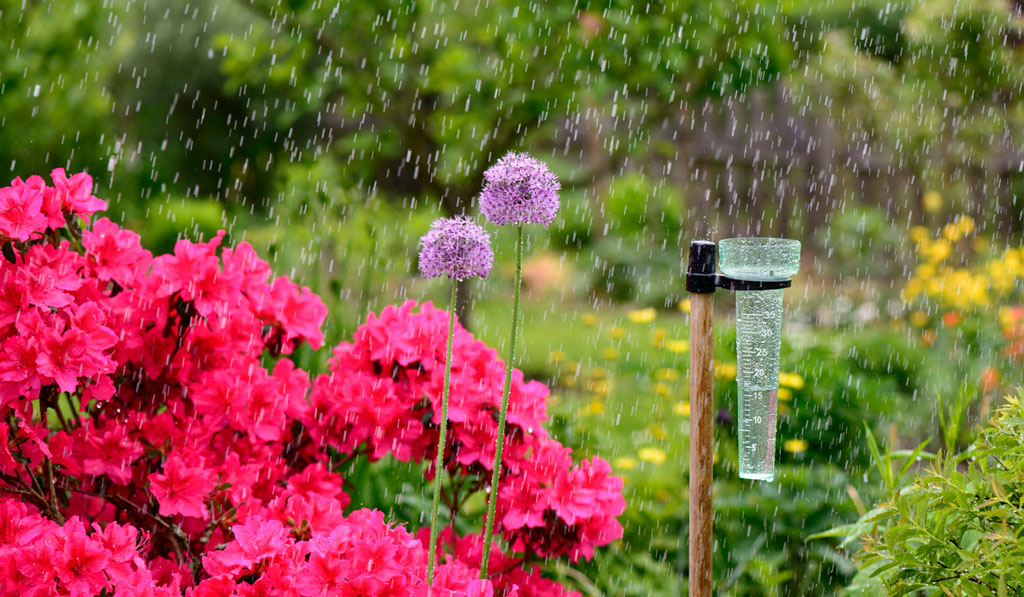
NULL
When an inch of water reaches the ground, it penetrates various depths. In sandy soil, that one inch will soak down to almost 30 inches. In loamy soil, the same rainfall will soak down to approximately 15 inches. In clay soil, it will soak down to 9-10 inches.
If you are a rainwater harvester, then you already know that a 10-foot-by-10-foot shed with 100 square-feet of surface will produce 60 gallons of water from an inch of rain. Therefore, one inch of rain will turn into 600 gallons of water for each 1,000 square-feet of surface (roof or shed). If we expand this premise, then one acre would collect about 26,000-plus gallons from that same one inch of rainfall.
SQUIRRELS
Squirrels can be entertaining. Their antics and facial expressions are fascinating. BUT, they can at times be a nuisance around your bird feeders. There are solutions.
First, if you really like where your bird feeder is hanging — for instance, so you can watch the birds from your kitchen window — trim branches within 24 inches of your feeder. These small branches are ladders for the squirrels.
Second, if the squirrels now start climbing down the S-hook from which you have your feeder hanging, change out your hook for a strong fishing line. As Wade Hibler suggested, this also will work to keep ants from your hanging hummer feeders.
Third, try squirrel-resistant bird feeders. These have a weight-activated cage that closes off ports to resist squirrels.
Or, and finally, simply enjoy the funny creatures and know that every time you fill your bird feeders, a portion will be going to the squirrels.
NATIVE PLANTS
Mike Riley, a fellow Master Naturalist and member of the Highland Lakes chapter of the Native Plants Society of Texas, offers these words of wisdom on why natives are good for you and the environment:
Native plants provide benefits to our local ecosystem and to us personally. Natives benefit our ecosystem since they:
- Provide food sources (seeds, nuts, nectar, and fruits for birds and native pollinating insects).
- Provide protective habitats for birds, butterflies, and wildlife.
- Support beneficial insects that help control destructive insect pests.
- Attract insects for birds to consume.
- Require less water, which leaves more freshwater for migratory birds and wildlife.
Natives save you time and money! Native plants are those well-suited to your specific climate and soil conditions. Once these plants become established, they require little extra watering and no chemical fertilizers, pesticides, or herbicides to thrive. This means less maintenance and less money out of pocket. Your investment in native plants will result in personal (time and money) benefits because natives:
- Tolerate and resist local diseases, pests, and drought — you keep the plants you buy.
- Minimize the use of fertilizers and pesticides — saves money plus toxins do not run off your land and into your water supply.
- Tolerate weather extremes so your plants “stick it out” through the extremes.
- Protect water quality by controlling soil erosion and runoff.
- Once established, they require little extra watering, thus conserving valuable water — you keep your money.
Till next time, Keep your souls and soles in your garden! Remember the True Master Gardener: Jesus said, “I am the vine; my Father is the Gardener.” John 15:1
"In the Garden" is written by father-daughter duo Bill and Martelle Luedecke and Bill Luedecke. Contact Martelle at 512-769-3179 or luedeckephotography@gmail.com. Contact Bill at 512-577-1463 or bill@texasland.net.












